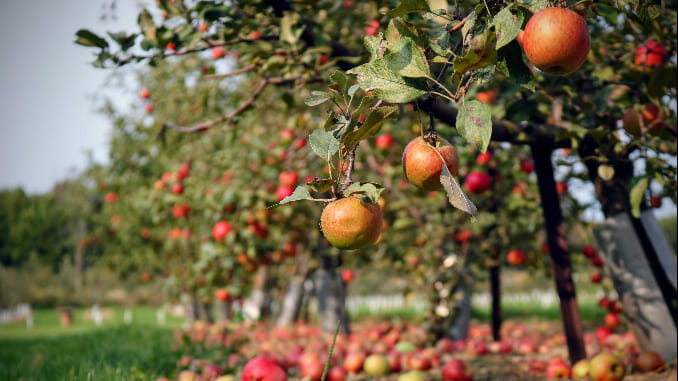The Winemakers Looking Beyond Vitis Vinifera
Photo by Skylar Zilka/Unsplash
One of the most appealing aspects of wine is our deep understanding, as humans, of its ancient nature: the implicit knowledge that for thousands of years, our ancestors have been fermenting food in all forms. Grapes, of course, but also wheat, apples and clusters of foraged blueberries. Consider the Egyptians, leavening bread with nutrient-rich yeast, or the Babylonians, crafting some of our first sweet beverages with water, honey and dates.
Across the country, a new generation of winemakers is reclaiming this definition of wine. They are rejecting binaries rooted in colonialism—new world vs. old world, grapes vs. found fruits—that have upheld the status quo at the expense of equity, access and taste. The result is an emerging class of wines, from Minneapolis, Minnesota, to Asheville, North Carolina, that not only express the land but also an ancient understanding of wine. As Erin Rasmussen, founder of the American Wine Project in Wisconsin, put it, “This may be the most exciting time in American wine history.”
Recently, on a golden day in Brooklyn, the expansiveness of this generation of winemakers was on full display. Organized by the sommelier and bartender Jahdé Marley, “Anything but Vinifera” (ABV) was an ode to all ferments. This includes beverages made from apples (ciders), indigenous grapes, foraged fruit, sake, makgeolli and, most commonly, hybrid grapes. Noticeably missing was the Sangiovese or Cabernet found at your grandfather’s house.
As the name suggests, hybrid grapes are the combination of two or more vitis vinifera varietals. Vitis vinifera are the grapes that we have come to understand as “wine,” from Pinot Grigio to Zinfandels and everything in between. Using the strengths of these grapes, hybrids are able to survive extreme conditions—cold climates, exposure to certain mildew or pests, drought—that the original varieties cannot.
Like so much of agricultural history, these hybrids emerged out of necessity. In the late 1800s, a small bug called phylloxera attacked vines in France and Italy, causing thousands of acres to perish and nearly decimating the industry. The grapes were only able to survive through cross-breeding with indigenous, bug-resistant American varietals.
Today, with the existential threat of climate change, producers are once again turning to hybrid grapes to survive. However, unlike the phylloxera of generations past, climate change is partially caused by the industry itself. Agriculture is one of the top five contributors to global warming, and more than half of these emissions are the result of synthetic fertilizers, the drainage of organic soils and irrigation practices. These tactics are employed in conventional vineyards across California, where more than ninety percent of wine in the United States is made.
Hybrid grapes offer a powerful alternative to these decimating practices. Their inputs in the field (fertilizers and water) are significantly less than their vitis vinifera counterparts, especially in regions such as the Northeast and Midwest where grapes cannot otherwise grow. For several producers at ABV, climate-adaptive strategies also include embracing the fruit that is around them and even eschewing the need to plant altogether. This could mean the inclusion of foraged fruits or growing localized crops and co-fermenting them with grapes.
-

-

-

-

-

-

-

-

-

-

-

-

-

-

-

-

-

-

-

-

-

-

-

-

-

-

-

-

-

-

-

-

-

-

-

-

-

-

-

-








































